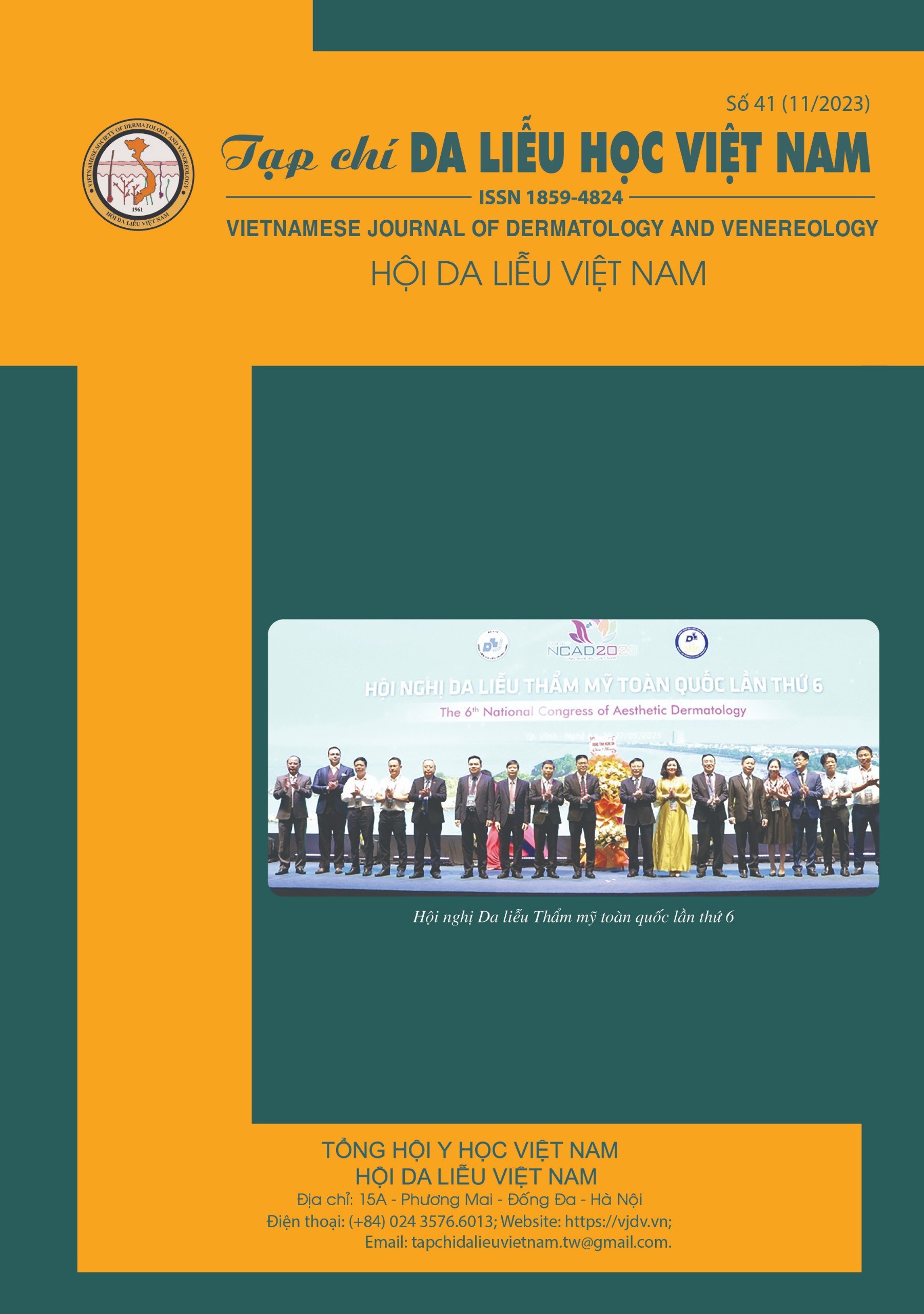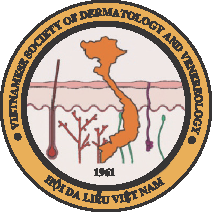CLINICAL FEATURES, RELATED FACTORS AND QUALITY OF LIFE OF ROSACEA PATIENTS
DOI:
https://doi.org/10.56320/tcdlhvn.41.112Keywords:
rosacea, flushing, persistent erythema, phymatous changes, quality of lifeAbstract
Objectives: To investigate the clinical manifestations, related factors, and quality of life of rosacea patients.
Materials and methods: A cross-sectional descriptive study with 90 rosacea patients were diagnosed at the National Hospital of Dermatology from August 2022 to May 2023.
Results: 53.3% of patients had onset between the ages of 30 and 50 with the most common symptoms: erythema (35.6%), flushing (31.1%), and papules/pustules (28.9%). 41.1% of patients were misdiagnosed. Diagnostic symptoms and main symptoms were found at a high rate: 96.7% with persistent erythema, 37.8% with phymatous changes, 74.4% with flushing, and papules/pustules, and 82.2 % with telangiectasia. Most of the lesions are located on the face, including the nose, cheeks, forehead, and chin. Flushing was more common in women while papules/pustules, and phymatous changes were common symptoms in men (p<0.05). Patients with moderate to severe flushing, telangiectasia, and inflammatory lesions accounted for 46.7%, 52.2%, and 57.8%, respectively. 42% of patients had ocular disorders when examined by an ophthalmologist. Sunlight, heat, stress, and alcohol are common factors that aggravate the disease. 62.2% of rosacea patients had moderate to severe negative impact. The quality of life of female patients was affected more than that of male patients with mean DLQI scores of 9.7±6.19 and 5.8±4.01 respectively (p<0.001).
Conclusion: Rosacea is characterized by flushing, persistent erythema, papules/pustules, and telangiectasia located in the facial center. Ocular manifestations are quite common, rosacea can be easily misdiagnosed with other diseases. Sunlight, heat, stress, and alcohol are the common aggressive factors. Patient's quality of life is negatively affected, especially women.





